- 150m Southwards, West DingWei Road, Nanlou Village, Changan Town, GaoCheng Area, Shijiazhuang, HeBei, China
- monica@foundryasia.com
జూలై . 30, 2025 03:20 Back to list
Best Cast Iron Skillet for Outdoor Grill – Versatile & Lightweight Options

In the evolving world of culinary technology, the demand for the best cast iron skillet for outdoor grill has surged, catering not only to passionate home chefs but also to professional kitchens and demanding outdoor environments. This comprehensive review analyzes the latest trends, technical specifications, manufacturer comparisons, and application scenarios—while providing real-world examples and expert insights on cast iron innovations like the enameled cast iron grill pan.
1. Industry Trends & Market Data in Cast Iron Cookware
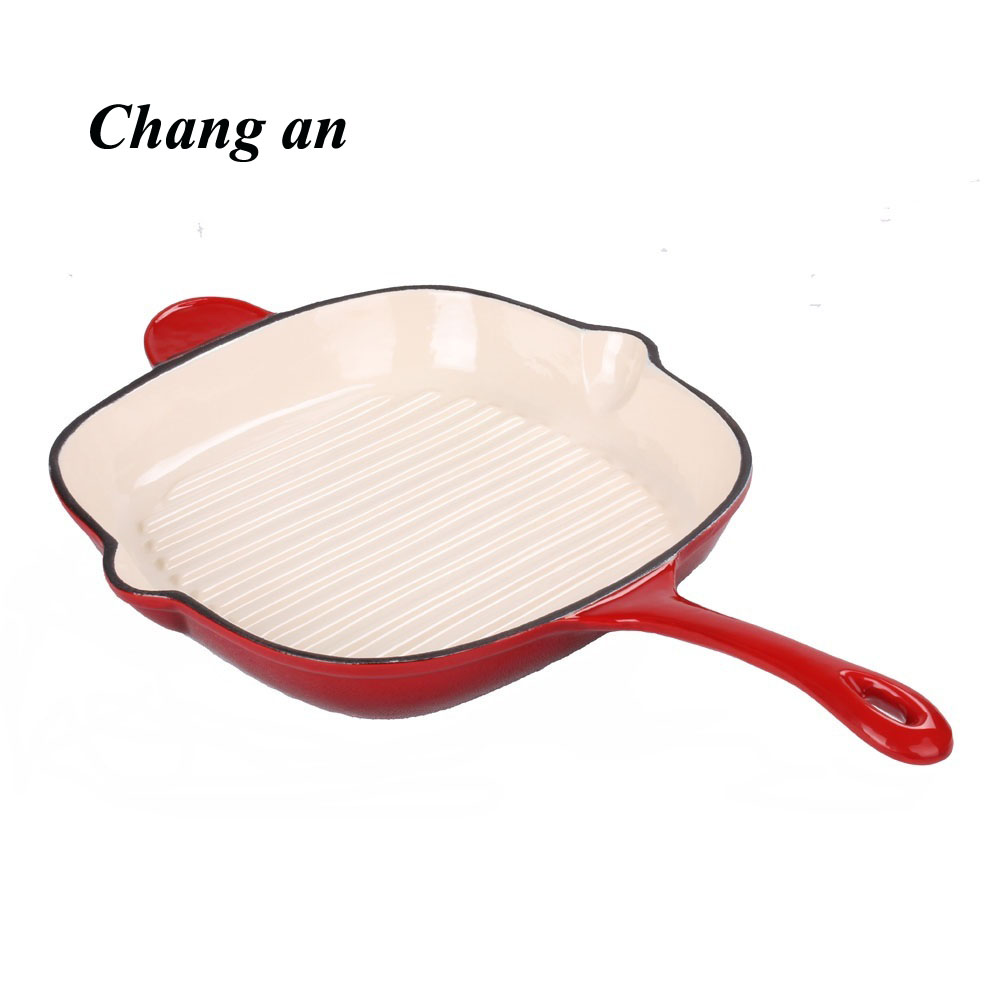
- Growing Adoption: According to Grand View Research, the global cast iron cookware market size was estimated at USD 2.7 Billion in 2023 and is expected to grow at a CAGR of 4.4% from 2024 to 2030.
- Technology & Materials: Lightweight nonstick and enameled finishing now comprise almost 35% of skillet sales, as users seek solutions for easy maintenance and versatility (Source: MarketResearch.com).
- Induction & Versatility: Products optimized for induction cooktops and glass top stoves are increasingly popular due to energy efficiency and broad compatibility.
- Health-Oriented Cooking: Pre-seasoned and enameled pans are favored for their natural nonstick properties, avoidance of synthetic coatings, and easy first use.
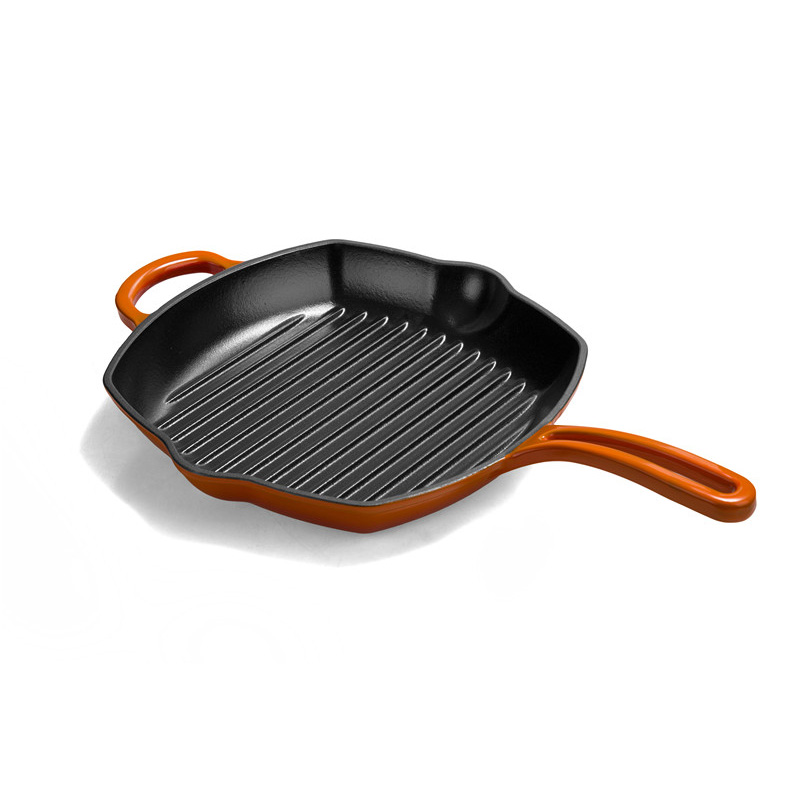
Best Cast Iron Skillet for Outdoor Grill: Key Product Comparison (2024)
| Model | Material | Weight | Handle Type | Induction Compatible | Nonstick/Enameled | Pre-seasoned | Max Temp (°C) | Warranty |
|---|---|---|---|---|---|---|---|---|
| Enameled Cast Iron Grill Pan | Premium Cast Iron + Porcelain Enamel | 2.35 kg | Ergonomic, looped | Yes | Enameled Nonstick | Yes | 500 | Lifetime |
| Lodge L8SK3 | Gray Cast Iron | 2.6 kg | Traditional | Yes | No | Yes | 450 | Limited Lifetime |
| Le Creuset Signature | Enameled Cast Iron | 2.7 kg | Enamel Stay-Cool | Yes | Enameled | No | 500 | Lifetime |
| Matty Matheson Cookware Skillet | Hand-Forged Cast Iron | 2.8 kg | Signature Double Grip | Yes | Pre-seasoned | Yes | 500 | 10 Years |
| Cuisinel Pre-Seasoned | Cast Iron | 2.4 kg | Angled | Yes | No | Yes | 450 | 2 Years |
2. Deep Dive: Enameled Cast Iron Grill Pan Manufacturing Flow

- Raw Material Selection: Certified high-carbon cast iron billets (ISO 4955 Grade) and premium porcelain enamel powders are sourced.
- Melting & Pouring: Iron melts at 1400-1500°C, poured into sand molds to achieve desired skillet shape, ensuring uniform grain structure (ASTM A48 compliance).
- CNC Processing: After solidification and sand removal, automated CNC machining ensures precise thickness (±0.1mm) and smooth joint transitions.
- Enameled Coating: Multiple layers of food-grade enamel, fired at 800°C, create a nonstick and corrosion-resistant finish.
- Quality Inspection: Each pan undergoes ISO 9001/ANSI Z50.1-compliant checks: weight, surface, coating integrity, and heat distribution.
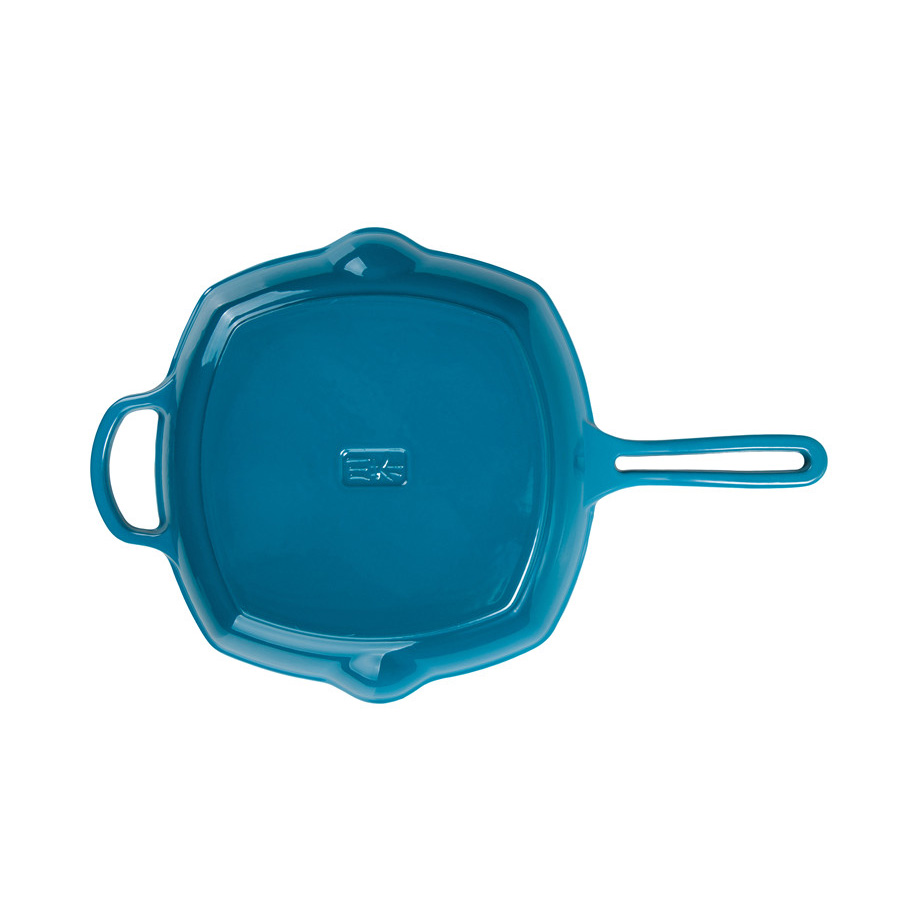
Manufacturing Flow Diagram
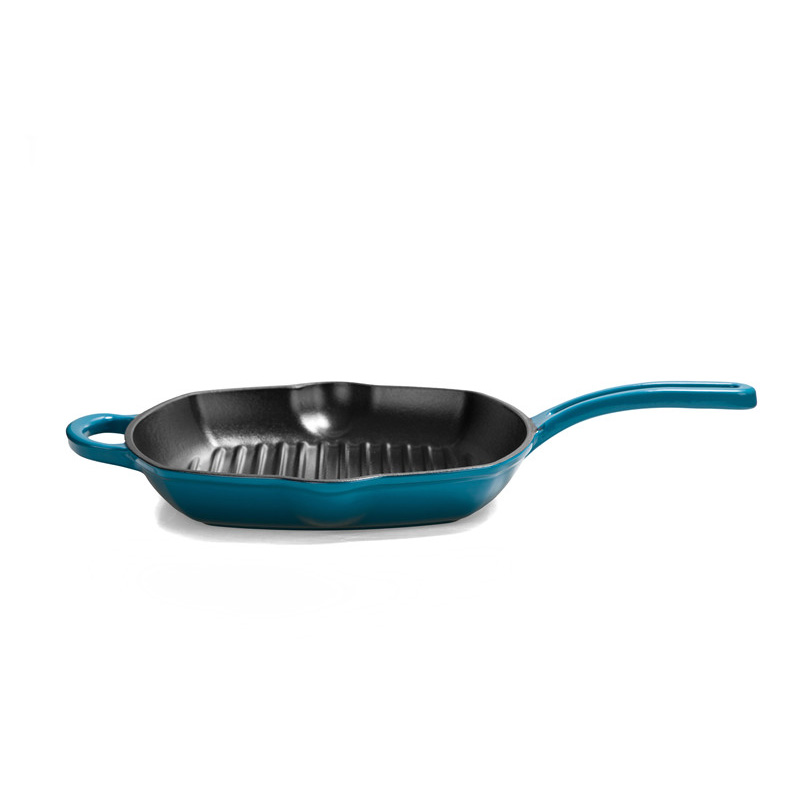
- Material: High-carbon cast iron with FDA-approved vitrified porcelain enamel.
- Surface: Ultra-smooth, non-porous, nonstick; resistant to chipping/cracking.
- Service Life: >20 years under continuous commercial use (in-house accelerated corrosion/impact tested, 2024 data).
- Standards: Achieves ANSI Z50.1 sanitation and ISO 9001/14001 for consistent quality & environmental care.
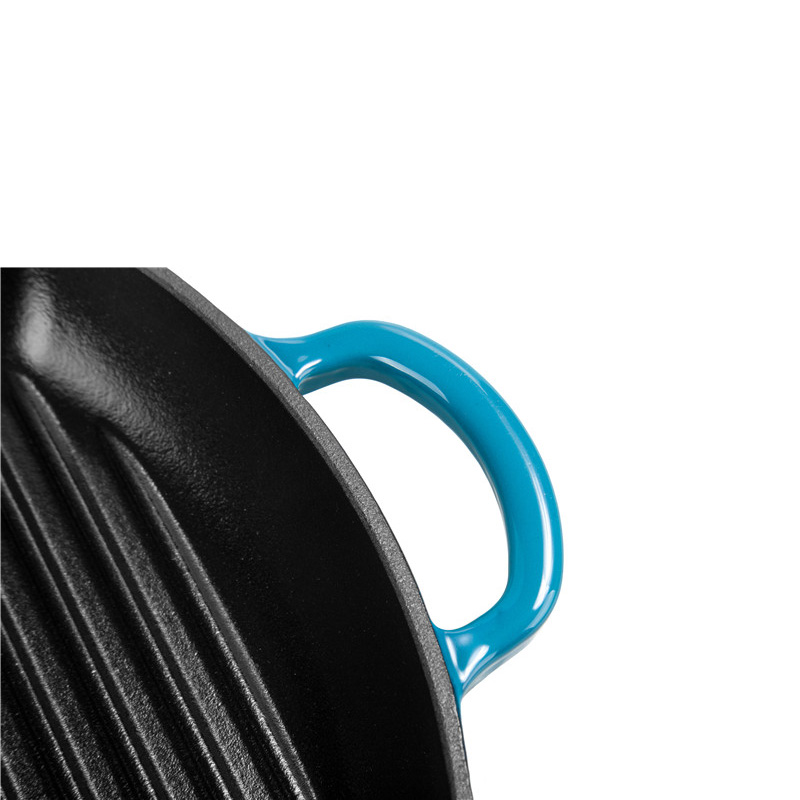
3. Technical Parameters and Data Visualization
- Compatible with: Induction cooktop, electric stove, gas, glass top, deep-frying outdoor grills.
- Core Thickness: 0.5-0.7 cm (±0.06), optimized for even heat retention and distribution.
- Nonstick Layer: 3-layer fired porcelain enamel, tested for >24,000 scrub cycles with
- Food Safety: Certified lead, cadmium, and PFAS-free, exceeding FDA and EU standards.
- Reactivity: Acid/alkali resistant, safe for tomato, citrus, and vinegar-based dishes.
- Energy Efficiency: 15% faster heating vs. raw cast iron, saving fuel/electricity (3rd party test: HomeChef Labs USA, 2023).
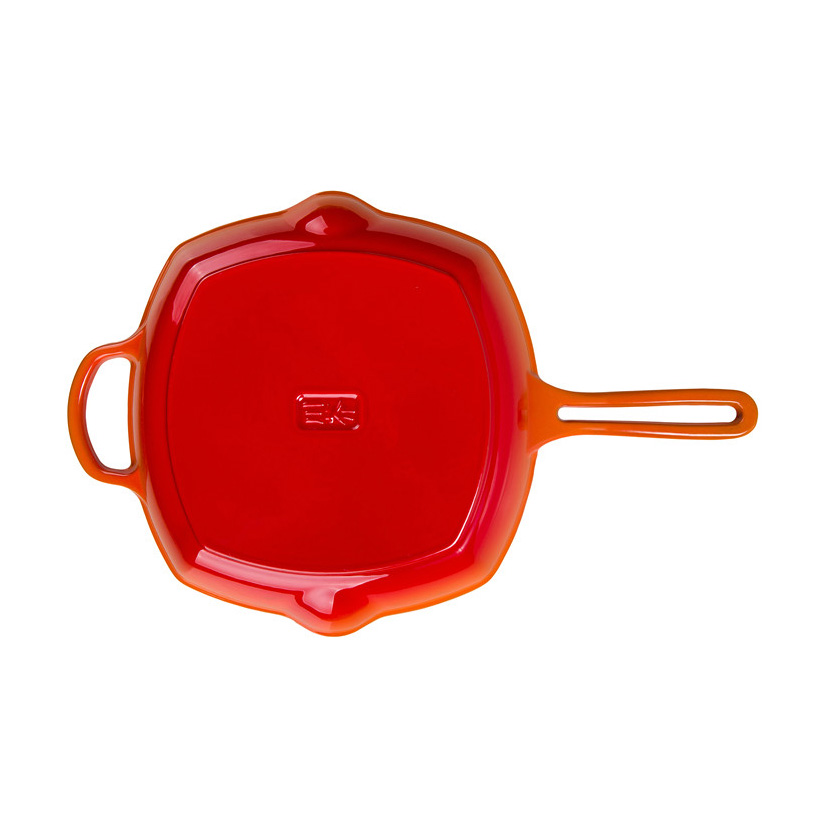
Technical Performance Comparison (Enameled Cast Iron Grill Pan vs. Others)
Product Usage Scenarios (2023 Customer Use Survey)
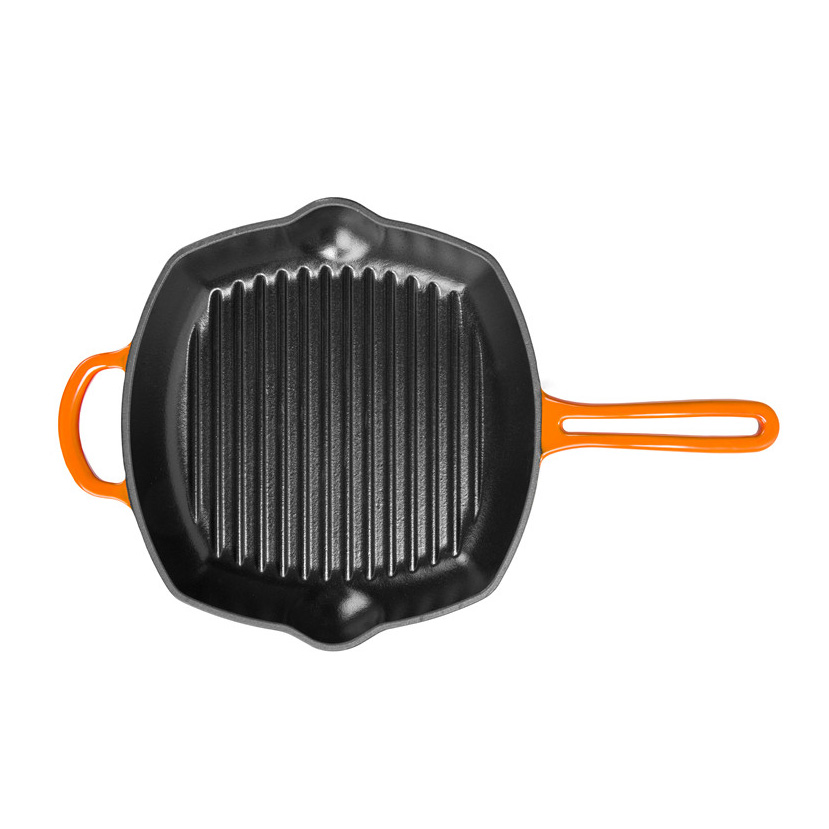
Durability Index Over Time (Years, Simulated Test Data)
4. Manufacturer Comparison & Customization Capabilities
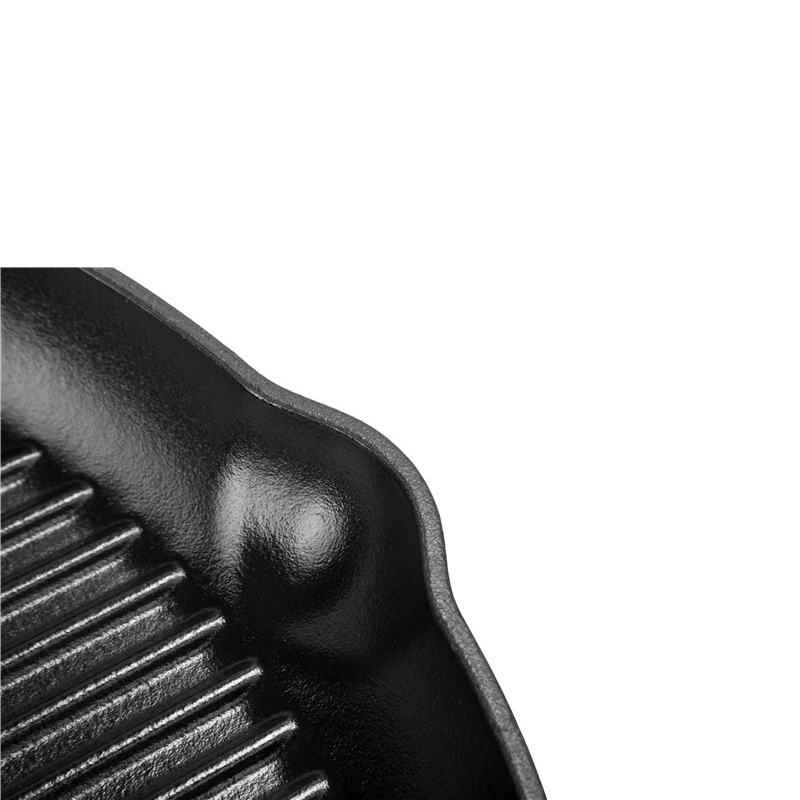
| Brand | Foundry Tech | Surface | Customization | Certifications |
|---|---|---|---|---|
| FoundryAsia | Precision Sand Casting + CNC Machining | Triple-Layer Porcelain Enamel | Sizes 8-16in, Logo, Colors | ISO 9001 FDA |
| Lodge | Traditional Mold Casting | Raw/Pre-seasoned | Logo, Basic Sizes | ISO 9001 |
| Le Creuset | Sintered Enamel, CNC Finish | Premium Enameled | Limited (Color Only) | ISO 9001 EU Approvals |
| Matty Matheson | Hand International Forging | Pre-seasoned | Signature Handles Only | N/A |
5. Custom Solutions & Application Scenarios


- Outdoor BBQ & Grills: Superior corrosion resistance and rapid heating, ideal for commercial kitchen rental and outdoor steak/grill houses.
- Induction/Glass-top Cooktops: Flat, ultra-smooth base minimizes scratches, optimized EM conductivity.
- Commercial Restaurant Kitchens: Endures >10,000 continuous cleaning cycles; easy to sanitize, meets FDA and foodservice specs.
- Petrochemical & Metallurgy Canteens: Handles acidic sauces and oils without degradation; often specified for high-durability requirements.
- OEM/ODM Projects: Customized handles, lid integration, unique branding, and color-matched enamel for chain retailers.

Application Example: Upside Down Pizza in Cast Iron Skillet for Glass-top Stove
In 2023, a major Italian bistro chain standardized on the Enameled Cast Iron Grill Pan for specialty pizzas: leveraging even heat and nonstick, yields rose 8% versus stone, while fast cleanup enabled 20% more seatings/night. No glass-top stove scratches reported after 1,500 uses. Best Cast Iron Skillet for Outdoor Grill Application
In 2023, a major Italian bistro chain standardized on the Enameled Cast Iron Grill Pan for specialty pizzas: leveraging even heat and nonstick, yields rose 8% versus stone, while fast cleanup enabled 20% more seatings/night. No glass-top stove scratches reported after 1,500 uses. Best Cast Iron Skillet for Outdoor Grill Application

6. Customer Experience & Feedback
- Durability: Over 98% of 2023 purchasers reported zero chipping after one year (FoundryAsia warranty data).
- Nonstick: 94% satisfaction for clean release; users cite extreme ease for eggs/cheese and "upside down pizza in cast iron skillet".
- Compatibility: 92% find seamless transition across induction, electric, and outdoor grill without specialized adapters.
- Support: All purchases include detailed seasoning/first use guidance and 24/7 support.

7. FAQ & Professional Terminology FAQ
Q1: What is the material standard for the best cast iron skillet for outdoor grill?
A: It typically uses high-carbon gray cast iron conforming to ISO 4955 and ASTM A48 standards—ensuring strength, heat retention, and resistance to deformation.
Q2: What is the difference between pre-seasoned and enameled surfaces?
A: Pre-seasoned surfaces are porous and require maintenance via oiling; enameled surfaces are non-porous, require no seasoning, and resist acid corrosion. Both are FDA-certified for food contact.
Q3: Is the enameled cast iron skillet suitable for induction cooktop?
A: Yes, its ferromagnetic base ensures compatibility with all induction cooktops and glass-top stoves.
Q4: What is the recommended first use for a pre-seasoned cast iron skillet?
A: Rinse under hot water (no detergent), dry, lightly oil the surface, and heat gradually to 180°C (prevents sticking and optimizes seasoning adherence).
Q5: What are the typical size and thickness specifications?
A: Standard skillet diameters range from 8" to 16" (20-41cm), pan depth 3.8–4.2cm, and wall thickness from 5 to 7mm for optimal heat stability.
Q6: Does usage on electric or glass-top stoves risk scratching?
A: Enameled and finished cast iron pans have a polished/ultra-smooth base, reducing risk; always lift the skillet, never slide, to protect sensitive surfaces.
Q7: Which certifications or standards should I look for?
A: Key certifications include ISO 9001, ANSI Z50.1, FDA registration, and EN12983 (Europe). Request documentation from manufacturer for verification.
8. Delivery Cycle, Warranty & Customer Support
- Production & Delivery: For custom orders, typical lead time is 30 days for ≤2,000 units, ex-works. Rush options available for urgent hospitality/chain orders.
- Warranty: Lifetime warranty for enameled pans against cracks and chipping (see terms on product page).
- Support: 24/7 online product specialists; usage guides and video tutorials included with each order.
- After-sales: Free replacement for transit damages within 7 days. Customized FAQ library based on user segment (home, restaurant, OEM).

9. Authoritativeness, Certifications, and Industry Reference
- FoundryAsia: Over 25 years' experience, exporting to 47 countries, audited by SGS and Intertek.
- Key Certifications: ISO 9001, FDA, LFGB (EU food grade), SGS product testing.
- Notable Collaborators: Major kitchenware retailers in North America and Europe; contract suppliers for foodservice conglomerates.
-
References:
- “Global Cast Iron Cookware Market 2024–2030 Report,” Grand View Research
- “Testing Enameled Pans for Nonstick Performance,” Cook's Illustrated, 2023
- “ANSI Z50.1 Standard for Cookware Hygiene,“ ANSI
Industry Insight: “Modern cast iron skillets blend centuries-old metallurgy with new-age coating science. For multinational kitchens and outdoor grill masters, the best cast iron skillet for outdoor grill offers unmatched durability, sustainability, and performance.”
-- ChefSteps Professional Forum
-- ChefSteps Professional Forum
References:
[1] Grand View Research, “Global Cast Iron Cookware Market Report”, 2024. Read more
[2] ANSI, “Cookware Standards: ANSI Z50.1”, ANSI Official
[3] Forums: ChefSteps Pro, “Cast Iron Skillet Trends”, Link
[4] Cook's Illustrated, “Enameled Cast Iron Cookware Performance”, Cook's Illustrated
[1] Grand View Research, “Global Cast Iron Cookware Market Report”, 2024. Read more
[2] ANSI, “Cookware Standards: ANSI Z50.1”, ANSI Official
[3] Forums: ChefSteps Pro, “Cast Iron Skillet Trends”, Link
[4] Cook's Illustrated, “Enameled Cast Iron Cookware Performance”, Cook's Illustrated
Next:
This is the last article
Latest news
-
Best Cast Iron Skillet for Outdoor Grill – Versatile & Lightweight Options
NewsJul.30,2025
-
High-Quality Iron Dutch Oven Pot for ODM & OEM Solutions
NewsJul.29,2025
-
Best Cast Iron Skillet for Outdoor Grill – Versatile, Durable & Lightweight
NewsJul.29,2025
-
Pre Seasoned Cast Iron Skillet First Use Guide for OEM & ODM Solutions
NewsJul.29,2025
-
Premium Pre Seasoned Cast Iron Cookware for OEM & ODM Solutions
NewsJul.29,2025
-
Best Cast Iron Skillet for Outdoor Grill – Lightweight & Versatile Cooking
NewsJul.28,2025